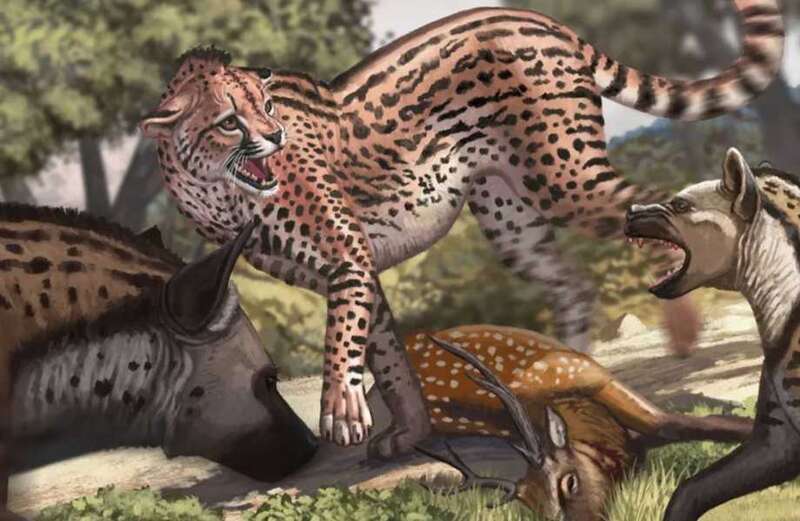THE world’s largest cheetah which roamed the earth more than one million years ago weighed as much as a gorilla.
Scientists who examined fossils of the hefty 420lb cat initially misidentified the remains as belonging to a prehistoric hyena.




Researchers have described their findings on the acinonyx pleistocaenicus in the May 15 edition of the journal Quaternary Science Reviews.
It roamed Eurasia from around 1.3 million to 500,000 years ago - when it became extinct.
They said the massive early Middle Pleistocene cheetah from eastern Asia has shed light onto the evolution of the closest living relative of the modern cheetah, the acinonyx pardinensis, in Eurasia.
 Man fined £165 after outraging the internet by dying puppy to look like Pikachu
Man fined £165 after outraging the internet by dying puppy to look like Pikachu
"New materials identified as acinonyx pleistocaenicus represent the latest and largest-sized member of the species," the researchers said.
"The fossil record of cheetahs in eastern Asia is notably scarce and predominantly fragmented."
CAVE DISCOVERY
Fossils of the giant cheetah - part of a lower jawbone - were first discovered in 1925.
The scientists conducted further research on these fossils.
They also reported on the discovery of two mandibles - the lower part of the jaw and part of the mouth - which were found in a cave in Liaoning Province, China.
A partial skull found in a cave during the 1930s in China, which had previously been identified as belonging to a hyena, "is also recognized to belong to acinonyx," the findings said.
"These materials offer crucial new information about the evolution of acinonyx during the Middle Pleistocene."
They estimated the cheetah's weight based on the length of its skull, height of the molar tooth and width of the bony structure that links the skull and spine, explained Live Science.
"All three (more recently found) specimens date to around 780,000 years ago, during the Pleistocene (2.6 million to 11,700 years ago), the website added.
"They found A. pleistocaenicus likely weighed more than 290 lbs (130 kg) and could reach 420 lbs (190 kg)."
 Dog who 'always melts hearts' with his smile hopes to find a loving family
Dog who 'always melts hearts' with his smile hopes to find a loving family
BIG HEAD
The latter weight is the equivalent of a hefty adult female gorilla.
By comparison, modern African adult cheetahs weigh 75 to 140 lbs (34 to 64 kg), according to Smithsonian's National Zoo.
A. pleistocaenicus had a broad skull, a "robust" snout, and well-developed canine teeth.
They also found that the massive cheetahs shared characteristics with modern African cheetahs.
"For example, the arrangement of the giant cheetahs' teeth and the bony space behind the nose match those uniquely seen in modern cheetahs," said Live Science.
Its extinction was probably affected by climate change that occurred during the Mid-Pleistocene Transition, said Qigao Jiangzuo, a paleontologist at the Chinese Academy of Sciences in Beijing.
"We hope our study can provide more information on the evolution and dispersal of the cheetah, highlighting the past success of this amazing lineage of cat in Eurasia," Jiangzuo told the website.



































